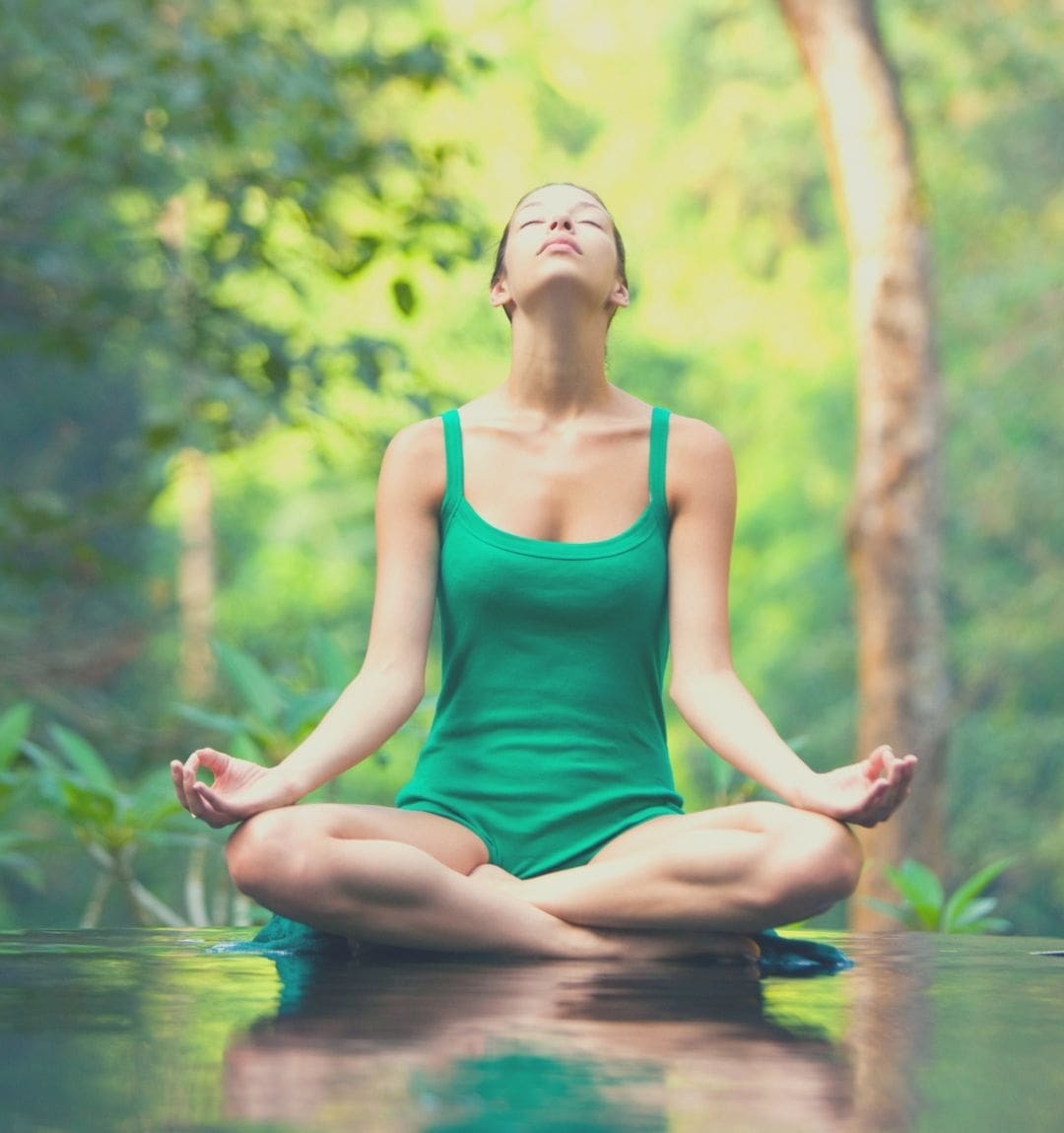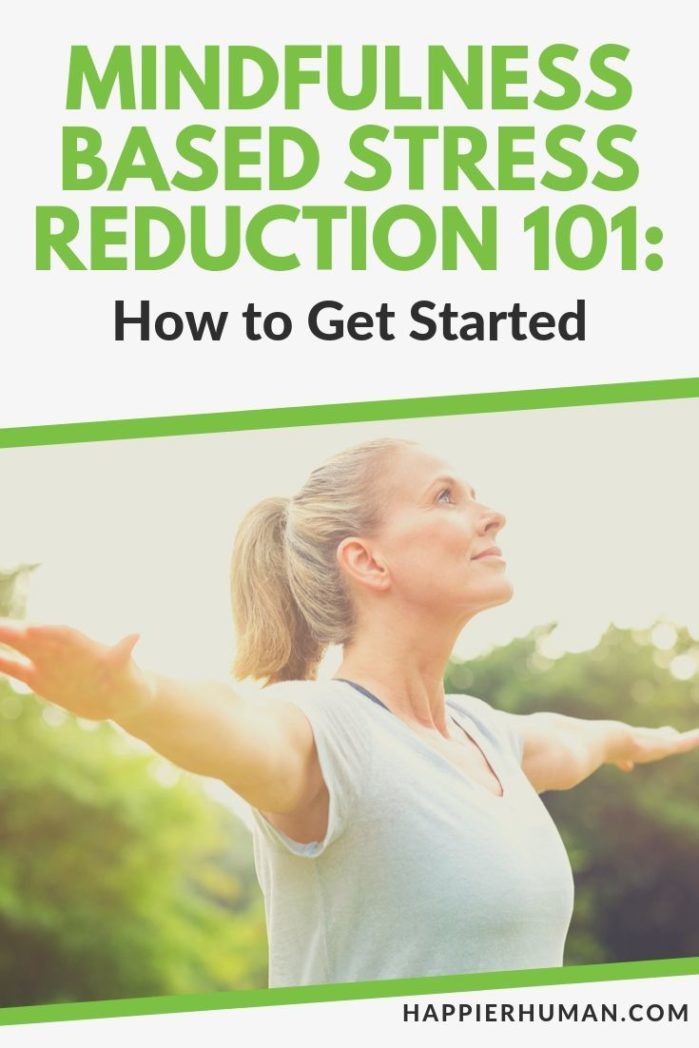In recent years, the term “mindfulness” has permeated popular culture, with companies, schools and even prisons offering mindfulness classes to better serve a wide range of individuals.
With the rise of yoga, meditation, and alternative medicine, mindfulness has become a catchphrase used to express the notion “of being present” or “being woke”. But what does it really mean?
What is Mindfulness?
Mindfulness is the Buddhist concept of being aware of the present moment, and practicing it can help you become healthier and happier. While mindfulness practice borrows heavily from Buddhism, it is in no way a religious practice.
If you want to learn more about how a mindfulness journal can help you to live a better life: please take a look at our book The Mindfulness Journal. It will help you to bring mindfulness into your daily life, and let go of unhealthy thought habits.
Rather than contemplating past events or future possibilities, or being distracted by worries and preoccupations, mindfulness calls attention to things happening in the here and now, to purposefully focus upon emotions, thoughts, surroundings, and body sensations.
The video below shares a few mindfulness habits to incorporate in your morning routine to help you become more mindful on a daily basis.
If you want to make mindfulness a part of your life, this article will give you some basic tools to get started. Mindfulness has been helping people to live happier lives for centuries, and you can start practicing it as soon as you finish reading this article!
What is Mindfulness Based Stress Reduction (MBSR)?
As Jon Kabat-Zinn states “Mindfulness is about being fully awake in our lives. (And as a result,) we feel more alive.”
Acceptance is another aspect of mindfulness, and therefore, the observation of thoughts and feelings is done without judgment. To help train the brain to concentrate on one thing in the moment, people use a variety of possible focal options, including breathing, walking, or noting sights and sounds.
This significant Buddhist philosophy has been adopted for mental and physical health purposes in the practice of Mindfulness-Based Stress Reduction (MBSR).
In 1979, Jon Kabat-Zinn created an eight-week program with a daylong intensive on Mindfulness-Based Stress Reduction which has now been adapted to a workbook format to support people who pursue this work.
MBSR encourages people to take better care of themselves, to improve the quality of their health and their lives, and to work through any “triggers” or “stressors” that cause limitations and suffering daily. This practice allows people to learn how to calm the infamous “monkey mind” and to redirect the energy to heal the mind and body.
Stressed Out and Sick
The detriments of stress on the body and mind have been studied for years, and with the hectic pace of modern life, stress-related illnesses are increasing. The constant barrage of social media and 24-hour news broadcasts cause tremendous anxiety and unease.
Many times we aren't really present in our daily lives, and this lack of a connection with the present moment can be a detriment to our wellbeing.
Being glued to a smartphone by which means anyone can communicate with you at any time and the growing popularity of social media influences have caused massive increases in depression and narcissism, fueling feelings of inadequacy, entitlement, self-loathing and lack of empathy.
How to combat this army of serious mental issues, including work burn-out and general informational saturation? How can a stressed person learn to de-stress?
MBSR Helps People Live Better Lives
Mindfulness-Based Stress Reduction (MBSR) does exactly what it states. It allows a person to control their reactions to external stimuli and to become calmer and healthier.
One of the best things about MBSR is that if you are willing to invest time each day to build a practice, it is an easy and cost-effective means to achieve the goal of a happier, healthier you! And that is really why you can to this webpage in the first place, isn’t it?
Are there actual benefits to MBSR? The 1979 program was introduced into the chronic pain units of hospitals. Kabot-Zinn wanted to work with patients for whom traditional medicine was not succeeding. He wanted to ascertain if mindfulness would help them develop a different relationship with pain, causing them to invent new ways to manage it.
The success of that experiment inspired multiple subsequent studies from major institutions of higher learning, such as Harvard, Stanford, UCLA, and UW-Madison.
All of the studies on MBSR indicate that it can reduce stress and induce relaxation. People tend to sleep better and feel less anxious.
In individuals with certain medical problems, MBSR improved blood sugar and blood pressure and helped decrease the discomfort of Type 2 diabetes, rheumatoid arthritis, and chronic pain. It can even alleviate symptoms of depression.
Stress Kills, MBSR Heals
Stress can cause a litany of problems for a person, manifesting in the body and mind. Some of the symptoms of stress are constant anxiety and worry, feeling agitated and easily irritated, and being argumentative and defensive.

Some people turn the stress on themselves, becoming incredibly self-critical, while others project the stress outwards, being critical of everyone around them.
In terms of the body, stress impacts sleep patterns and concentration abilities, resulting in a restless unclear mind. Skin rashes, jaw clenching, teeth grinding and headaches are physical manifestations of stress.
With all of these potential problems, MBSR is the best defense, since it decreases stress and psychological distress, helps to develop a coping mechanism for illness and trauma, facilitates recovery, decreases depression and improved general health and wellbeing.
In addition to these five major benefits, MBSR enhances mental health and psychological functions; increases emotional regulation, decreases anxiety, depression and worry, reduces symptoms of alcoholism, and improves social skills.
When applied to students, MBSR heightened academic achievement, reduced aggressive and problem behavior, boosted the ability to cope with bullying, and encouraged resilience. In the workplace, MBSR reduced “burnout”, augmented job performance and diminished turnover at work and dissatisfaction with work.
In all who practice it, MBSR allows higher brain function, positive effects on the immune system, lowered heart rate and blood pressure, mental clarity and calmness, and improved attention and focus.
All of these claims are the results of medical and scientific studies from around the globe, which proves that MBSR is not merely a passing fad or carnival quackery.
Practicing MBSR is Making a Change for the Better
So now that you know that MBSR is a life-changing practice and it can help with a wide variety of health and personal issues, how do you actually do it? Is there a certain technique? Is it difficult?
MBSR is incredibly easy, although it does require consistent practice and a daily commitment to that practice. Ideally, one should strive to meditate for 45-60 minutes a day, but the actual process and the time spent can vary among individuals, so please don’t feel even more stressed thinking about how to release your stress!
There are classes you can take, but you can do MBSR on your own. Please note that there is a tremendous amount of information online, including worksheets, books, and programs, such as Jon Kabat-Zinn’s original eight-week course. Most are available for download so that you can start exploring MBSR as soon as possible.
Below are the steps that you can do in your own home or anywhere, every day, to reap the amazing benefits of MBSR.
Please note that there are different types of mindfulness exercises that you can do and when you start do not have unrealistic goals of mastering the art, since mindfulness is a process. Being kind to yourself is the first and most important step.
1. Body Scan
Focus your attention on your body, starting at your feet and finishing with the top of the head. Notice any places of tightness or soreness.
Observe any feelings of discomfort or pain. Some people visualize this like an X-ray, slowly examining the body in a methodical manner. Others imagine a bright white light moving through the body, not only noting the sources of any distress but also eliminating it.

Another alternative is to imagine the flesh slowly falling from the bones, encouraging the release of any tension held in the body and the beginning of true relaxation. Finally, some will focus on the rising and falling of their breath through the movement of their stomachs and lungs.
2. Mind Scan
Once the body has a certain degree of calmness, turn your focus to the mind. Most likely, thoughts about the day, work, family and relationships, and other distractions, will play across the screen of your mind fairly consistently.
Acknowledge the thought without judging it. Don’t fall into the trifecta of regret “I should have, I could have, I would have”. Merely note the thought and the emotion associated with it (worry, concern, anger) and then turn your thoughts back to the present.
The average human mind is often termed a “monkey mind”, jumping from subject to subject, running wild and difficult to “tame”.
Therefore, with a monkey mind, how can you be still? MBSR accepts the monkey mind without judgment and helps to make peace with it, by helping you to not dwell on dinner plans or work conflicts. It does take time to deal with a wandering mind which is why MBSR is called a practice.
3. Yoga
Although Yoga is an exercise routine that merges breathing with stretches and poses to relax and condition muscles, it literally translates as “yoke” in Sanskrit. It is defined as the means of uniting the individual spirit with the universal spirit. In the philosophical tradition, it is one of the six orthodox schools in Hinduism.
Although its roots are in very lofty origins, yoga is an excellent discipline to help with mindfulness. Breathing is coordinated with certain poses, merging body and mind. It helps to focus and clarify the mind.
At the end of the practice, Shavasana or “Corpse Pose” is a perfect way to experience mindfulness, since you will be encouraged to do both a body and mind scan, to release all thoughts, and to become disengaged and disassociated with your notion of “self”.
4. Eating
Yes, you read that correctly. There are exercises for eating and cooking mindfully. Eat slower and savor the taste and texture of the food, which actually facilitates better digestion and hinders overeating.
While you appreciate the flavors (try to describe them to yourself), eat in silence. Turn off the smartphone, the television, even the music, and enjoy some true quiet time. You could even make the dining area an electronics-free zone.
There is a tradition that food prepared with love and intention tastes better than food prepared haphazardly or robotically. Therefore, MBSR encourages you to pay more attention to ingredients and cooking.
What ingredients are you using? Do you “know” your food? What is/was your mood when cooking? Depressed from the day or irritated by the annoyance of food preparation? What is causing the resistance?
By asking yourself these questions, by noting your mood and knowing the food, you have the power to change your relationship with food and eating.
5. Walking
Also a Buddhist practice, walking meditation is a good MBSR exercise and one that is easy to perform. Simply pick a space, indoors or outdoors, where you can walk ten to thirty paces. Before you begin walking, simply stand and feel your feet touching the ground or the floor. Let your arms and hands hang loose.

Close your eyes and breathe deeply, centering yourself for a moment, and then let yourself walk slowly, with ease. Feel how the body functions as you lift and move the leg, as you place your foot back onto the earth. When you complete your first circuit, stop at the end and pause, taking in the surroundings.
Then, turn around carefully and then start walking again, back to the initial starting point. Continue to walk for ten to twenty minutes (or longer). If your mind wanders, kindly observe the thought, and return to the action of walking.
If you choose to do this activity outside, it is also good to observe your environment. Notice the air, the temperature, the wind, how it feels on the skin. See the plants and their colors, the blue sky and the white clouds. Walking, breathing and observing nature all serve to focus the mind and calm the nerves.
6. RAIN
Even seasoned practitioners of MBSR experience stress and therefore, once you start to sense stress arising, you can use the following four steps to return to mindfulness. Coined by Michele McDonald, RAIN is easy to remember and to apply:
- Recognize what is happening
- Allow the experience to exist
- Investigate with Kindness
- Natural awareness
This can be used as a meditation or deep breathing exercise, but the last step, natural awareness, is just that – rest in awareness. Like MBSR, RAIN is a practice that takes time and patience.
If you are interested in finding an MBSR class near you, do some research on the proffered courses. If possible, talk to former and current students, and even the instructors. Please note that the more expensive or exclusive a class appears, it does not mean that it is necessarily better.
There are some groups that offer accreditation for MBSR programs, so if that is something in which you are interested, either as a student or potential instructor, feel free to pursue that angle.
Where Can I Find MBSR Classes?
The University of Massachusetts (UMASS) has a certification program for MBSR instructors, and there are local and online options available for anyone who wants to learn MBSR practices in an organized setting.
If you want to learn more about the UMASS MBSR certification program, just click here. You will be able to search for local UMASS MBSR certified teachers, and also look at online MBSR classes that can help you further your MBSR practice.
And here are other classes from other universities and schools:
- Yale School of Medicine
- University of California San Francisco
- Oregon Health & Science University
- Pennsylvania State University
- University of Pittsburgh Medical Center
Keep in mind that while MBSR was designed by Jon Kabat-Zinn, the mindfulness practices that it is based on have been in use for thousands of years. Both Buddhist and Hindu practices built the tools that Kabat-Zinn utilized, and mindfulness can be practiced in many, many ways.
Final Thoughts on Mindfulness-Based Stress Reduction
MBSR has a rich history and effective results, backed by global scientific, medical, and philosophical studies. It is an easy yet meaningful means by which a person can alter his or her life and health.
Learning how to integrate mindfulness into your daily life is rewarding.
If you would like to know how a mindfulness journal can help you to practice mindfulness: please learn more about The Mindfulness Journal, a helpful resource for anyone who wants more peace and satisfaction in their life.
Although it certainly takes time to establish the practice, the variety of exercises designed to help one learn the technique gives people a chance to individualize their practice and to apply it to any situation in any environment.
Convenient, healthy and easy, MBSR offers a chance to destress and to declutter your life, so why wait? Start your new journey today and feel more alive every day.
And if you're looking for more ideas on how to use mindfulness to lessen stress in your life, check out these blog posts:
- 17 Mindfulness Activities and Exercises for Teens
- 13 Mindfulness Group Activities & Exercises
- 27 Mindfulness Activities for Seniors & the Elderly

Nicholas Say was born in Ann Arbor, Michigan, and has been interested in global belief systems from a young age. This area of study led him to research many Eastern philosophical systems, including Vedic and Buddhist ideas and practices. Today he thinks that humanity needs to find ways to be happy with being, as opposed to possessing and doing. His views fall roughly in-line with the late philosopher Alan Watts, who he venerates as great teacher.


